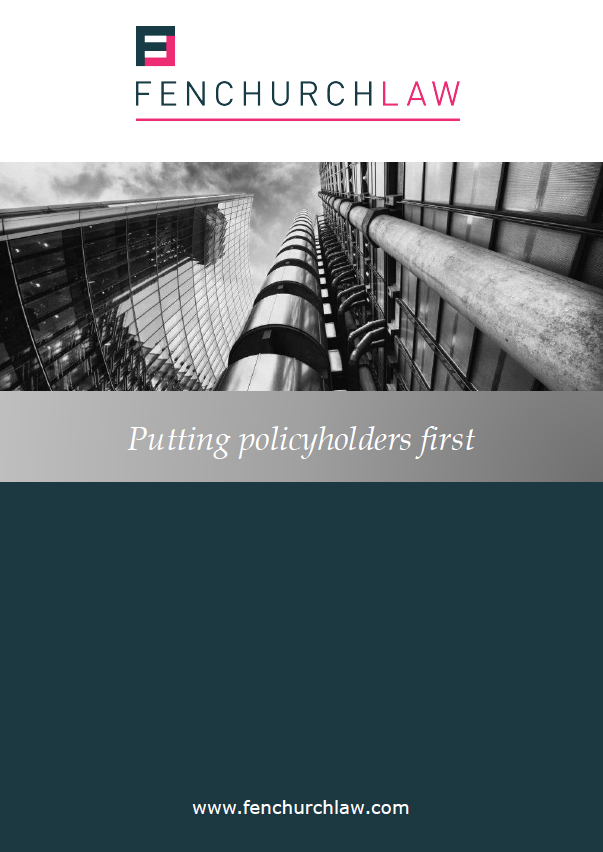
Not so peachy – a disappointing Covid-19 decision for policyholders
Bellini (N/E) Ltd trading as Bellini v Brit UW Limited [2023] EWHC 1545 (Comm)
In a month where Covid-19 decisions are coming in thick and fast, policyholders will be disappointed by the most recent judgment concerning a disease wording. A copy of the judgment can be found here.
On this occasion the policyholder, Bellini (N/E) Ltd, was issued with a policy by its insurer, Brit UW Limited, that contained an extension to business interruption cover for business interruption caused by damage arising from a notifiable disease manifested by any person whilst in the premises or within a 25-mile radius.
Disease wordings like these will be familiar to those who are acquainted with the FCA test case and Covid-19 litigation, but in this particular case the quirk is a reference to the defined term “damage” in the introductory paragraph to the extension. Damage within this policy was defined as “physical loss, physical damage, physical destruction”. However, it was common ground between the parties that there had been no physical loss of or damage to the policyholder’s premises or property.
The policyholder argued that policy provided both basic cover for physical damage and also extensions of cover for other matters that would not ordinarily result from or in physical damage. In particular, the provision of a radius clause of 25 miles for the manifestation of disease went beyond the basics of physical damage to the premises or property therein, which the policyholder asserted was reinforced by the court’s analysis of similar wordings in the FCA test case.
Among other arguments on the construction of the policy, the policyholder contended that if the extension only responded to physical damage it would “render any cover it provided illusory, and negate the purpose of the clause in providing cover for a notifiable disease that could manifest itself miles away”.
The court, however, was unpersuaded by the policyholder’s arguments, instead relying upon the “ordinary meaning” of the clause, which provided no cover in the absence of physical loss, damage or destruction. In particular, the court considered it to be significant that the clauses dealt with in the FCA test case were not expressed as to cover interruption caused by damage, and had been recognised as non-damage in that cover was not contingent on physical damage.
The court considered that the policyholder’s arguments effectively required it to re-write the policy contrary to the parties’ express agreement and the established approach to contractual construction.
Comment
Recognising that the impact of a notifiable disease will be non-damage related losses, many wordings make it clear that the extension is intended to be triggered in the absence of physical damage, and that is how the clause would be understood to operate.
In circumstances where the parties agreed that a disease at the premises or within 25 miles of the premises does not cause physical damage, it is difficult to see what purpose, if any, can served by a clause that only provides cover for physical damage.
It is therefore difficult to reconcile the court’s attempts to give effect to the wording of the policy with what most policyholders (and we assume those insuring them) would expect to be covered when offering a 25-mile radius clause as part of the policy cover.
It is notable that the courts in the FCA test case grappled with similar difficulties on wordings where the standard form of certain clauses assumed the paradigm case of business interruption by reference to physical damage. The Supreme Court, albeit in the context of trends clauses, came to the view at [257] that the “reference to “damage” is inapposite to business interruption cover which does not depend on physical damage to insured property such as the cover with which these appeals are concerned. It reflects the fact that the historical evolution of business interruption cover was as an extension to property damage insurance. It was held by the court below, and is now common ground, that for the purposes of the business interruption cover which is the subject of these appeals, the term “damage” should be read as referring to the insured peril”. It appears that in the right circumstances the courts are not opposed to manipulating the wording of a policy to give it proper effect, and one might have expected the court in this matter to have taken a similar approach to the 25-mile radius clause.
Undoubtedly the market will be watching this one closely for any signs of an appeal, especially in light of the body of Covid-19 case law that appears to support a disease clause such as the one in dispute here.
Authors:
Anthony McGeough, Senior Associate
Joanna Grant, Partner
Other news
Fenchurch Law expands into Scandinavia with Denmark office launch
31 October 2024
Fenchurch Law, the award winning international law firm working exclusively for insurance policyholders and brokers,…



